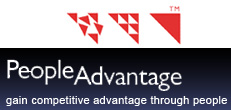Here are some tips on how to manage some types of dysfunctional and destructive people.
It is important to understand that this article is not concerned with isolated and/or one off behaviour. Behaviour is considered dysfunctional only when there is a clear pattern of behaviour, which is systematically and well documented over time.
Passive Aggressive Behaviour
Behaviour Includes:
· Passive resistance, covert, angry
· Controlling, undermining, manipulation
· Resistance, Stubborn, inertia
Some Tips:
· Be careful, don’t blame yourself, use self-talk, be rational, be cool
· Document the behaviour for yourself; including the experience of other people and/or reports
· Don’t play the game – this means don’t allow the passive aggressive person push your buttons
· Be assertive – try to avoid getting angry, or at least displaying anger, and make sure you get the facts right
· If you manage the person; ensure they understand that you will not tolerate their behaviour
· Don’t lose your cool; passive aggressives get a “kick” out of you losing control and playing into their hands
· If they are your boss; aim to get contracts, written agreements, protect yourself!
Bullying Behaviour
Behaviour Includes:
· Dominance, humiliation
· Intimidation, exploitation of power imbalance
· Behaviour will lack empathy
Some Tips:
· Don’t let bullies win; report them to management
· Talk to your peers and other people, bullies like to divide and conquer and isolate people
· Respond in a calm non-emotional way, avoid eye contact
· In a group just ignore the person
· In a group, you and other members walk away; bullies need an audience; they believe an audience confirms their behaviour
· Bullying is a complex problem; requires effective organisational policies and procedures to deal with it
· Dismissal is the only answer for repeat offenders
Workplace Psychopathic Behaviour
Behaviour Includes:
· Amoral, exploitative, unprincipled
· Deceiving, dishonest, remorseless
· Anti-social, lack of guilt
· Narcissism – very self-centred
· Bullying behaviour (see above)
It is estimated that 3 to 4 percent of males and 1 percent of females are psychopaths
Psychopaths are very destructive to the organisation and very damaging to individuals.
Some Tips:
· Psychopaths do not change
· If you identify a pattern; warn others, collect facts – as many as possible
· Look for unprincipled patterns; but remember, one unprincipled action does not make a psychopath – it may be inexperience, immaturity, lack of knowledge about organisation policies and procedures etc
· Don’t cover for anyone you believe is behaving in an unprincipled manner; also copy documents and ensure minutes of meetings outline concerns about decisions, advice received etc
· Talk to a senior member of the organisation about your reservations and concerns
· Psychopaths are successful because they “divide and conquer” – it is difficult to get the full picture; each person really only gets a “bit of the picture”. There will be many victims across the organisation.
· Generally, psychopaths can only be effectively dealt with if they are revealed or there is a threat that they will be revealed
· So the strategy is to take actions that reveal the unprincipled behaviour pattern
· This needs to be followed by dismissal
Summary
The source for much of this material is “Difficult Personalities – A practical Guide to managing the hurtful behaviour of others” Dr H McGrath & H Edwards: 2000, Choice Books
Also, the following books are good for learning about psychopaths:
“Working with Monsters – How to Identify and Protect Yourself from the Workplace Psychopath”: Sydney, Random House Australia
“Snakes in Suites – When Psychopaths Go To Work”: Paul Babiak Ph.d & Robert D. Hare Ph.d; 2006, Harper-Collins
You can purchase these books at our Organization Renewal Online Store. Go to Blogroll and click onto the store.
© PeopleAdvantage Pty Limited 2008 All Rights Reserved
Reality in this 3
https://justdomyhomework.com/ part series of articles, a variety of teachers who have used the model do a wonderful job of clearing up misconceptions and sharing lessons learned
.

